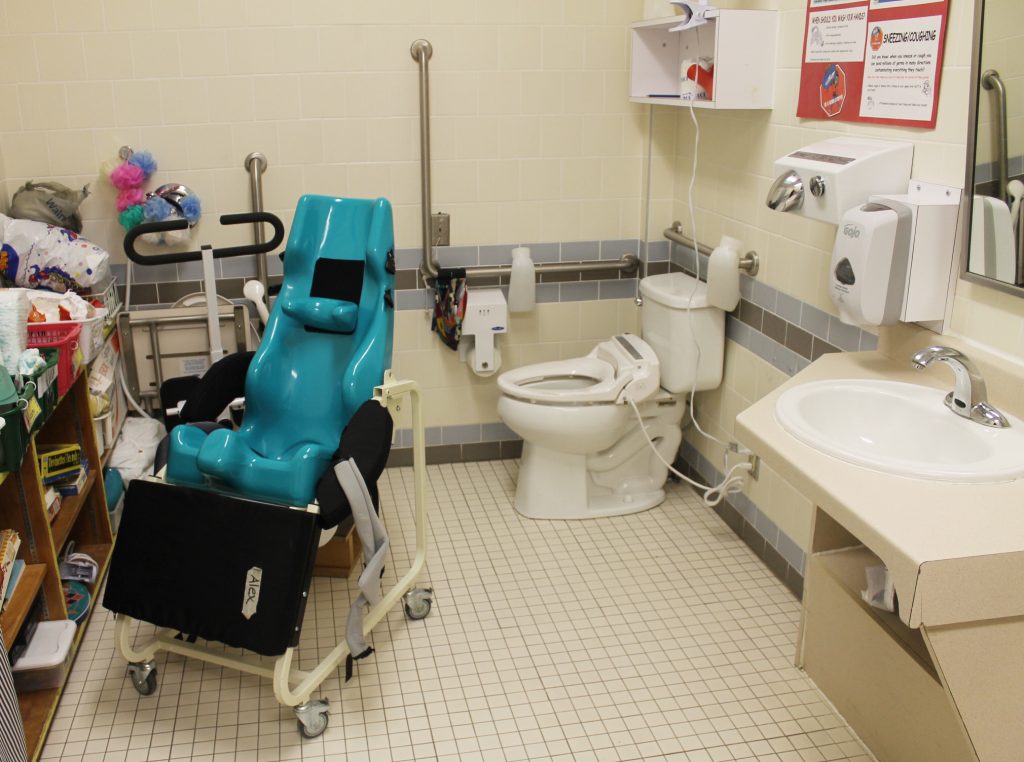Schools failing accessibility test
By Jullian Paquin
Fewer than half of the 150 public schools in Ottawa have fully accessible washrooms for people with physical disabilities, and only one elementary school in Centretown — Centennial Public School on Gloucester Street — is equipped with fully accessible, barrier-free washrooms, according to research by the Ottawa Carleton District School Board.
Centennial was built in 1966 with the goal of being fully accessible. Children from all over Ottawa come to Centennial because it’s the only elementary school within the board that offers a dedicated physical support program. The school’s doorways and hallways are wider than normal and have accessible washrooms and changerooms, said Nicole Mitchell, a teacher at Centennial.
Mitchell said if a family would rather have their child attend a school in their neighbourhood, the school will adapt to accommodate their needs.
Currently, only 35 per cent of schools within the board have designated barrier-free washrooms, according to a memo released by the OCDSB on Feb. 24.
The memo was written by board staff in response to a question asked by a trustee regarding the number of gender-inclusive and barrier-free washrooms in the city’s public schools. The response highlighted the fact that the number of barrier-free washrooms has greatly increased over the past five years, but it’s still clear that most public schools in Ottawa have a failing grade when it comes to accessibility.
The board has gradually been altering washrooms to make them accessible for children with physical disabilities on a case-by-case basis, according to the memo from Jennifer Adams, director of education, and Michael Carson, chief financial officer.
Some schools in Centretown — including Glashan Public School on Arlington Street and Lisgar Collegiate Institute — are identified as accessible by the board, but these schools have limitations that, in fact, render them only partially accessible.
Glashan, for example, is included on the list of accessible schools, yet its washroom is lacking automatic buttons to open the door, said Miro Vala, OCDSB manager of facilities.
Lisgar has wheelchair access to its auditorium via a stair lift, but much of the rest of the building is inaccessible because the downtown high school is a designated heritage structure with strict rules on building modifications. It does not have an elevator.
Glebe Collegiate Institute, which serves many students from nearby Centretown, altered one of its men’s washrooms three years ago to become a barrier-free washroom, said Angela Nixon, an educational assistant at Glebe.
Adult High School on Rochester Street has an accessible washroom that was built in 2008 to meet the needs of a student with cerebral palsy.
The board is responding on a case-by-case basis to the individual needs of students, said Vala.
Neither Cambridge Street Public School nor Elgin Street Public School — two other Centretown schools within the OCDSB — have accessible washrooms.
Accessible stalls can be a relatively easy addition to a regular washroom, often offering extra space for the user.
However, barrier-free washrooms cater to a larger group of people with a wider variety of needs.
Barrier-free or universal washrooms are much more spacious and are sometimes equipped with overhead transfer lifts, sinks that are at a lower height and grab bars for added balance and mobility.
If the student needs a high level of assistance, it is much easier to use a barrier-free washroom than an expanded stall in a standard washroom.
Some additional requirements for barrier-free washrooms include a power door operator at the entrance, grab bars, and increased minimum clear-floor area in stalls to allow for turning space, according to Ontario Building Code regulations updated in 2015.
Between three and five barrier-free washrooms are being added each year in OCDSB schools in response to the growing need for accessible washrooms.
The improvements are being made in accordance with the Accessibility for Ontarians with Disabilities Act, which became law in 2005 with the goal of making Ontario fully accessible by 2025.

